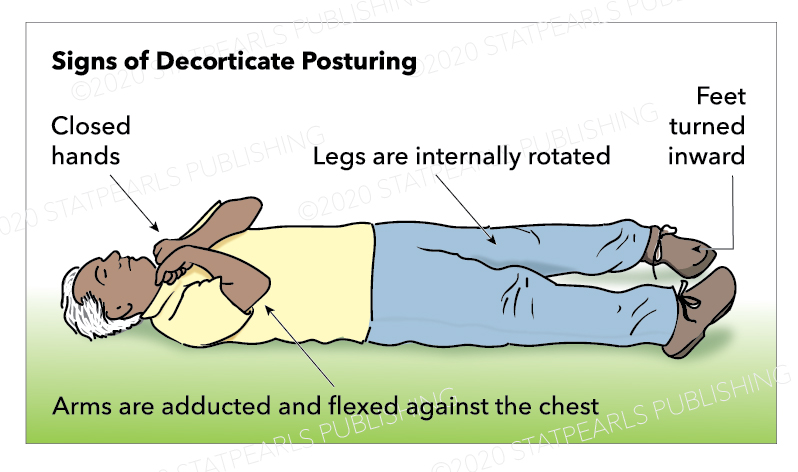| |
Decorticate Posturing After Cardiac Arrest
In a meta analysis the best predictors of poor outcome after cardiac arrest were lack of corneal or papillary response at 24 hours and lack of motor movement at 72 hours.
Decorticate posturing after cardiac arrest. In the patient watch the spastic gulping movements of the mouth and tongue. Normally people displaying decerebrate or decorticate posturing are in a coma and have poor prognoses with risks for cardiac arrhythmia or arrest and respiratory failure. On the 17th day of this treatment after rewarming 35 5 degrees c and discontinuation of the barbiturate the patient responded to command.
When the patient developed a characteristic decorticate posture mild hypothermia oesophageal temperature 33 34 c was induced. This is agonal breathing. As for the compressions nowadays we would like to see them faster and deeper with fewer and briefer pauses.
Weaning from the ventilator was successful on the 18th day. On the 17th day of this treatment after rewarming 35 5 c and. Gcs score of 14.
When the patient developed a characteristic decorticate posture mild hypothermia oesophageal temperature 33 34 degrees c was induced. Patients with brief episodes of systemic circulatory arrest who suffer milder degrees of cerebral anoxia ischemia demonstrate the clinical features of a reversible metabolic encephalopathy. Absence of babinski reflex d.
Decorticate posturing is flexion of the upper limbs with extension of the lower limbs associated with a lesion at the level of the cerebral cortex or hemisphere. However regardless of the cause or duration of. The primary brainstem dysfunction means that the brainstem was directly damaged by a bullet and there is no way that this can be quickly reversed.
Decorticate posture is stiff with legs held out straight fists. The reversibility of this state which is considered to be very critical and hardly reversible depends upon the origin of the brainstem dysfunction. List of 70 causes for cardiac arrest and decerebrate posturing alternative diagnoses rare causes misdiagnoses patient stories and much more.
Source : pinterest.com

